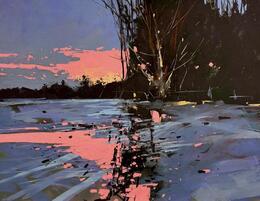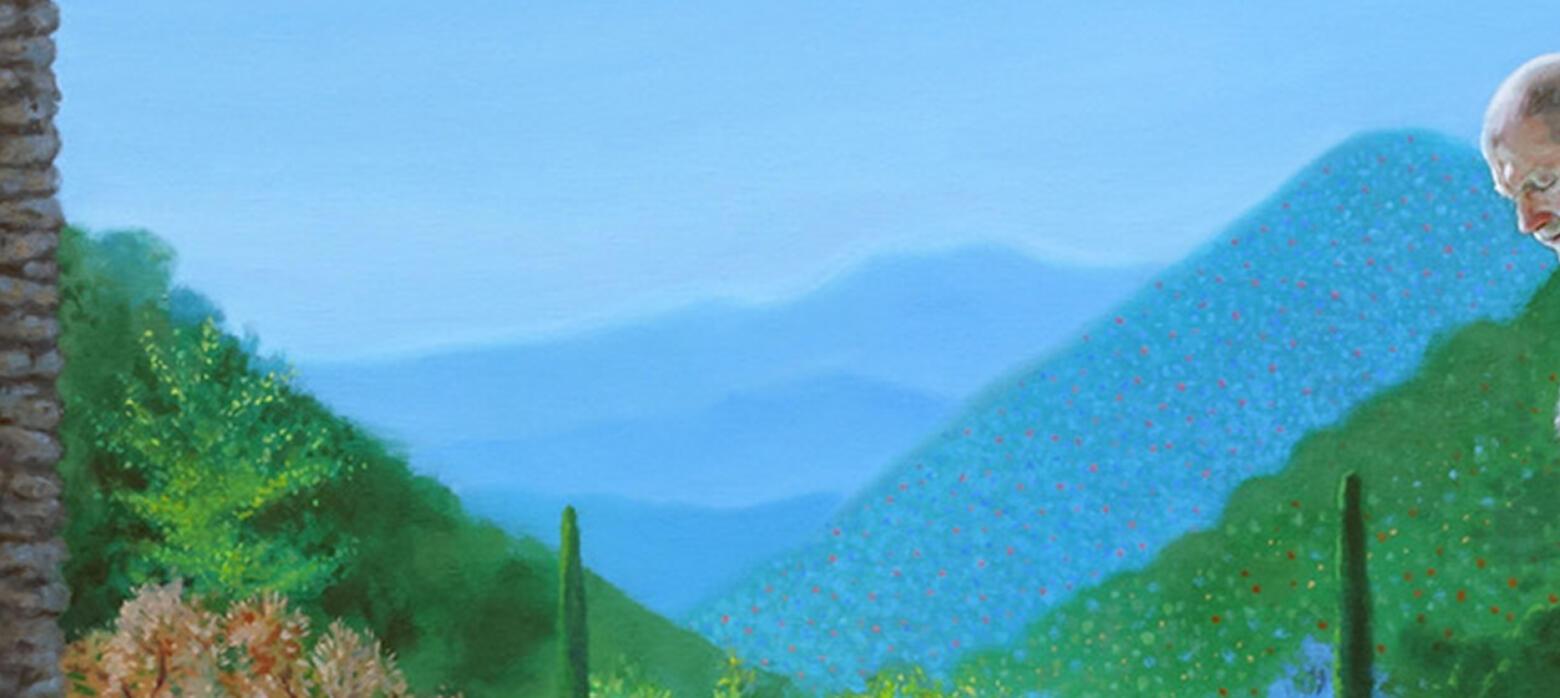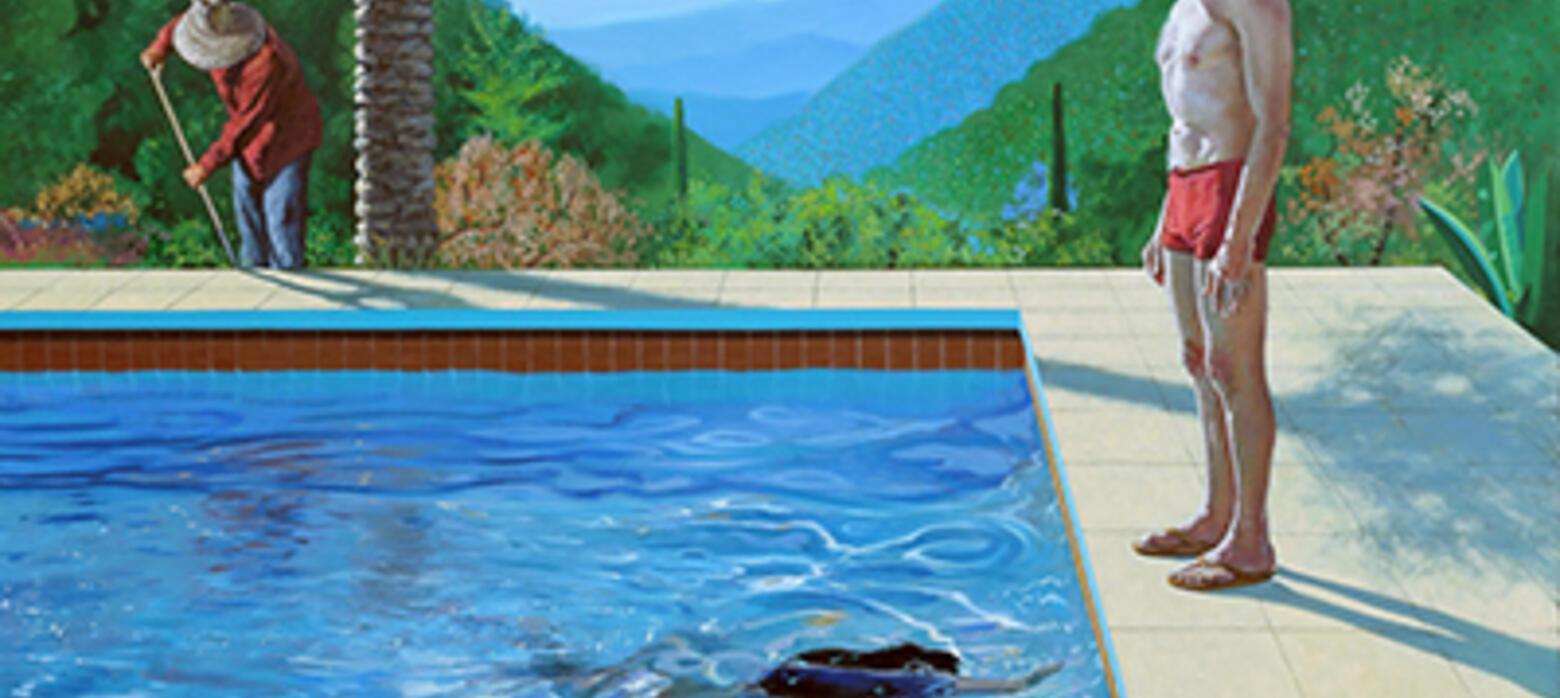The Art of Self-Portraiture
/ Royal Society of Portrait Painters
To coincide with National Selfie Day, we asked five artists what self-portraiture means to them.
Historically, self-portraiture was popularised during the Renaissance, brought about by the rise of individualism and the “heroic” status given to artists at that time. Since then, some of the most iconic artworks, from Van Gogh to Frida Kahlo, have been self-portraits. The genre has been used as a means of formal experimentation as well as psychological investigation. While contemporary artists such as Jenny Saville have used self-portraiture politically, to subvert societal expectations around prescribed notions of beauty.
In recent years, a new kind of self-portrait has emerged – the selfie. With the ubiquity of smartphones, this instantaneous method of capturing the self has become the defining visual genre of our time. “Today, we live in the age of the selfie,” wrote Jerry Saltz in his popular 2014 column on the subject. So much so, that there is even a whole day devoted to the act. Yes, today (21 June) is National Selfie Day. Despite the omnipresence of these digital snapshots, self-portraiture as an art form remains steadfast. It is perhaps more impactful than ever when its mindful painterly approach is compared to the stream of transitory catalogues which live on our devices.
Here, we speak to five artists about the art of self-portraiture, the technical and personal motivations behind it and the selfies that have influenced them throughout art history, from Rembrandt to Hockney.
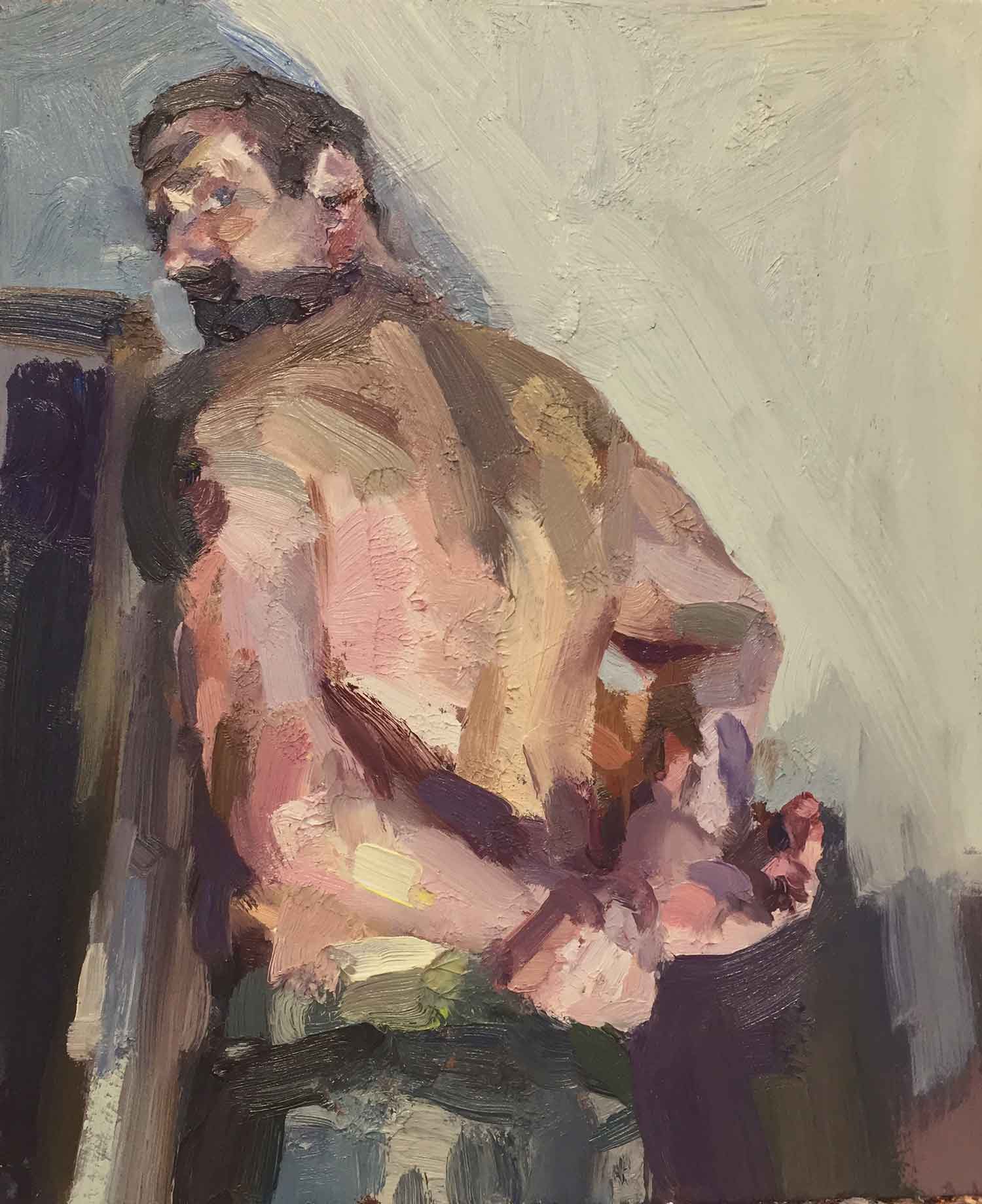
Self Portrait, Arms behind Back, Tim Benson: Oil, 36 x 30 cm – £1,600
Tim Benson PROI NEAC RP
Tell me about the thought behind this self-portrait and the process of painting it.
This portrait was a direct reaction to not getting a piece of work into a competition. Over the last few years, I've channeled a lot of that negative energy into positive outcomes. Normally, I'll go to my studio and I'll do a self-portrait. That's something I've done for the last three years.
In the past, [rejection] was quite crushing. Not crushing, but you know, it would create a lot of negative energy and it was just sort of buzzing around doing no good. So I decided to channel it into something positive, slightly aggressive. I think I work in a relatively aggressive way anyway. I suppose it's quite a muscular way of working: Loads of paint. Big brushes. So, this is the latest iteration of yet another rejection. I've done loads of self-portraits before, I'm also not very interested in painting my own face, so this time around I wanted to do something different – which is how I ended up doing it from the back.
I used a series of mirrors and a photograph of my arm – because obviously, you can't paint with an arm that's behind you. It was quite a physical, visceral thing. A big creak in the neck. A twist in the torso. Quite painful. But, necessary.
What do you want to achieve with your portraits?
A portrait can be a beautiful thing, even if it's not of a beautiful subject matter done in a beautiful way. There's beauty in anger. There's excitement. Portraiture transcends necessity for something that is objectively safe or pretty or glorifying. That's just not what I want to do. So it's almost a direct response to that, challenging that convention as explicitly as possible.
Are there any self-portraits by living or dead artists that you admire?
Rembrandt. I was brought up in North London. Kenwood House nearby is full of Fine Art. There's one of Rembrandt's latest self-portraits there. My mum used to plonk me in front of it. It's a beautiful piece of work. Totally honest. No artifice. Very unflashy. Very modern.
Tai-Shan Schierenberg, who is one of the judges on the Sky Portrait Artists of the Year and won the BP Portrait Award in 1989. His self-portraits from the early 90s are particularly good, so I was influenced by some of that.
'Self Portrait, Arms behind Back' is currently exhibiting in the New English Art Club Annual Exhibition until 22 June.

Portrait of an Artist by David Cobley: Oil on Linen, 122 x 173 cm
David Cobley RP NEAC
Tell me about the thought behind this self-portrait and the process of painting it.
I came up with the idea for this painting last year while visiting my daughters who live in California. Swimming in the neighbourhood pool one day, the reflections in the water reminded me of David Hockney’s 'Portrait of an Artist (Pool with Two Figures)'. I share Hockney’s enthusiasm for the visual world and it seemed natural to make a painting based on it: not a pastiche or spoof, but a painting that was about my own relationship with water, California and a former partner.
The standing figure is me and the figure in the pool is my ex-wife. A decade ago, she became deeply religious. I don’t share her enthusiasm for God and a life of servitude. And so, my figure in this painting is looking on in bewilderment at her new-found faith. Perhaps also with some nostalgia on the time spent bringing up our daughters before the chasm that opened up between us.
The figure to the left is the hard-working Mexican who, in Orange County, is the one tending pools, mending roads and building houses. The hill in the background is Saddleback Mountain, which dominates the county’s eastern skyline.
In preparation for the painting, which I completed back in the UK, I was fortunate to have the enthusiastic assistance of my eldest daughter, who acted as both camera woman and body double.
What motivates you to paint a self-portrait and what do you get out of painting self-portraits?
For one thing, I am always around, so if I am short of someone or something to paint I only have to look in the mirror. And for another, self-portraits give me a chance to try a new approach or spend time working something out – either about myself or about the particular situation I find myself in.
Are there any self-portraits by living or dead artists that you admire?
I came across a reproduction of Rembrandt’s 'Self Portrait as the Apostle Paul' as a young teenager in a local shop selling Athena prints and bought it with the money from my paper round. I had it framed and hung it on my bedroom wall as a kind of talisman. Rembrandt was talented and ambitious and became very affluent from the proceeds of his work as a painter. He also faced the loss of three of his children just weeks after they were born, as well as the death of his wife and only son in adulthood. Living beyond his means, he died a pauper. And although he painted himself as a youth and in middle age, his later self-portraits depict a man who understands what life is all about. He seemed to understand me too.
David Cobley All By Himself, a retrospective exhibition charting 50 years of the artist's career, will take place from 10 to 15 September 2019.
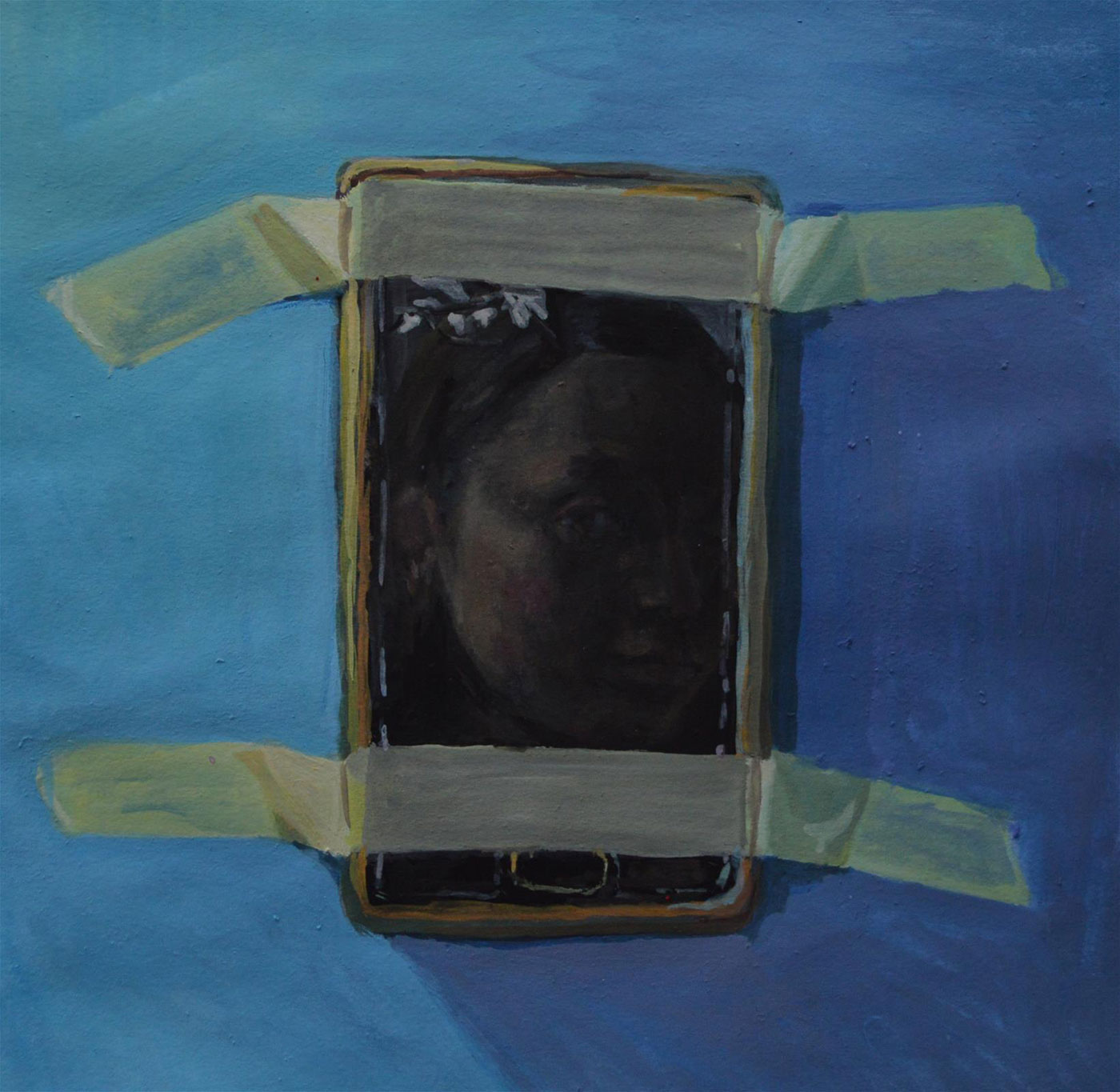
Self-Portrait on a Train by Suzon Lagarde: Gouache, 20 x 20 cm – £350
Suzon Lagarde
Tell me about the thought behind this self-portrait and the process of painting it.
I painted this self-portrait on a train to Canterbury last spring. I had some gouache, my sketchbook and the desire to paint from life. As I'm mostly drawn to faces, I figured I could be my own model. With no proper mirror on hand, I decided to use the screen of my phone as a reflective surface and taped it to the front seat for convenience.
What motivates you to paint a self-portrait and what do you get out of painting self-portraits?
This last year I've done a fair amount of self-portraits for various reasons. It's a wonderful way to practice as the model is always available and it takes the pressure off trying to please anyone. It can also be an opportunity to get to know yourself better through this intense scrutiny – painting my hands has been particularly important. And of course, there's another aspect of painting which lies beyond the visual representation, which can become emotionally charged, often beyond what you expected.
Are there any self-portraits by living or dead artists that you admire?
Vivian Maier's work is particularly fascinating. I love the playfulness and inventiveness of her self-portraits, finding indirect ways to capture her reflection among daily moments of life.
'Self-Portrait on a Train' was exhibited in the Royal Institute of Painters in Water Colours 207th Exhibition 2019. Suzon will be showing new work in the upcoming In the Studio exhibition, from 12 to 17 August.
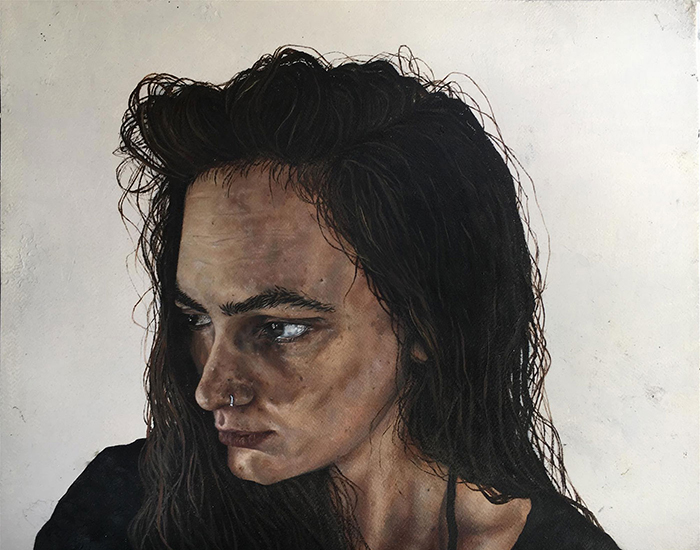
Self Portrait at 19 by Erin Lee: Oil, 54 x 62 cm – £500
Erin Lee
Tell me about the thought behind this painting and the process of painting it.
This self-portrait came out of a desire to see an image of myself that countered passive representations of women in art and the media. Painted over the course of a year and a half during my university holidays, it became almost therapeutic in its ability to make me contemplate myself in a way that I don’t on a day to day basis. Instead of labelling my appearance as one thing or another, I saw my features as a unique combination of depths and textures with variations of light bouncing off of them. During those hours, painting it gave me a different relationship with myself that I think is only really capable through the intimate study of it. It was a refreshing break from the pressures society puts on appearance.
What motivates you to paint a self-portrait and what do you get out of painting self-portraits?
I am fascinated by gender and gendered representations in art. Having studied the History of Art at university, I became aware of the conventional dichotomy throughout Western art of the male artist and female muse and how representations of women were often geared towards the male gaze, using notions of vanity to redeem voyeurism.
It is interesting to think of selfies in the same light, even though there is a sense of agency inherent in them. The self-portrait for me is a way of challenging this convention and raising questions about the viewer’s own embedded perceptions of women’s self-portraits. As a female artist, I hope that by creating self-portraits I can contribute to rewriting traditional modes of representation and modes of viewing.
Are there any self-portraits by living or dead artists that you admire?
I really admire Jenny Saville’s self-portraits. Her corporeal application of paint teases out the fleshy meaning of the work in a way that I think is truly sensational. I also take a lot of inspiration from the compositions of Joan Semmel’s work, such as in 'Me without Mirrors' (1974), in which we are presented with a view of her body as though we are experiencing it through her own eyes. Through their un-idealised depictions, both of these artists raise questions about representations of women in art and society that are still relevant today.
'Self Portrait at 19' will be exhibiting in the upcoming Royal Society of British Artists Annual Exhibition, 4 to 14 July. Erin will also be showing new work in the upcoming In the Studio exhibition, from 12 to 17 August.
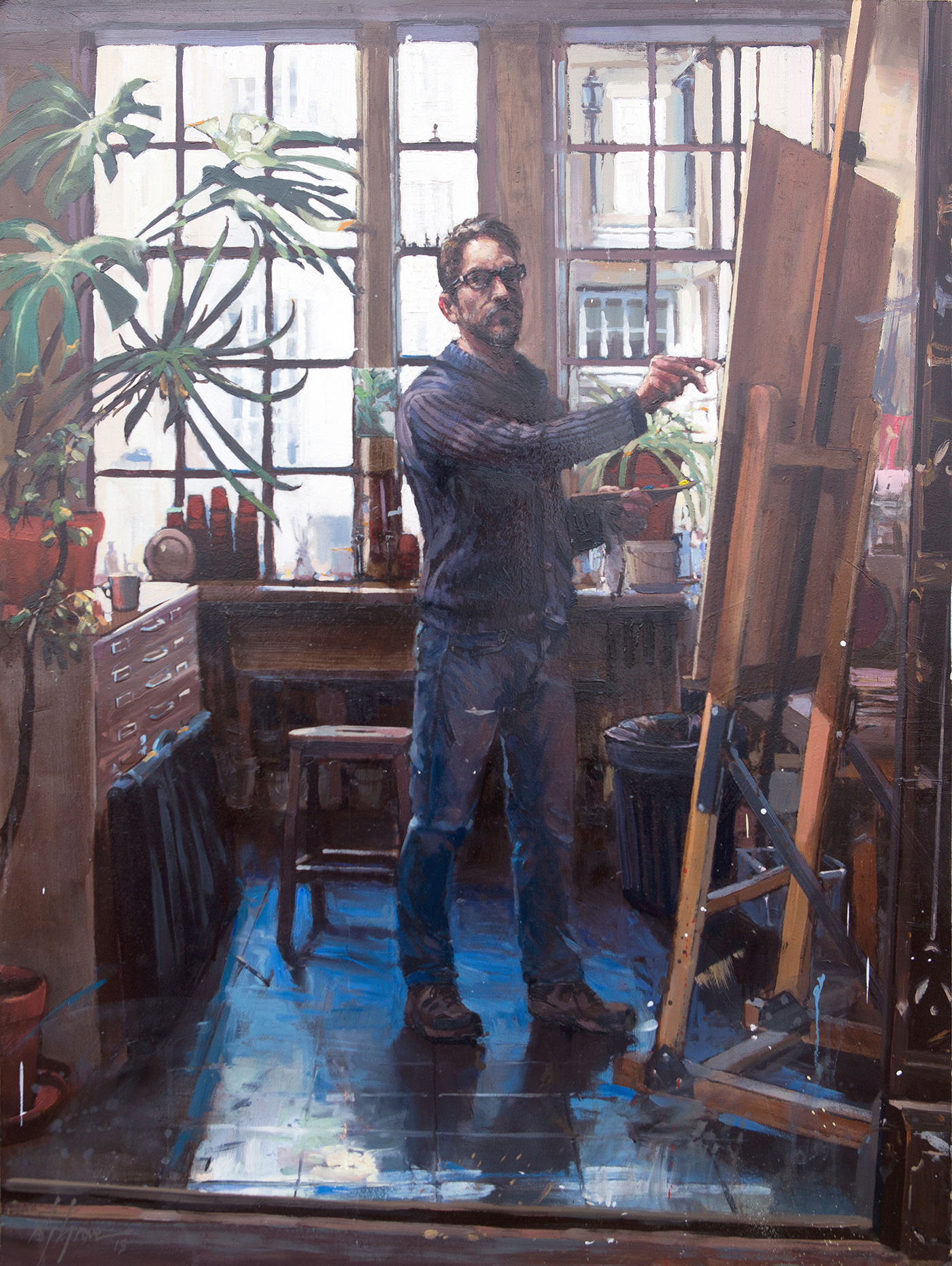
Self Portrait, Oundle School Studio by Nick Grove: Oil, 120 x 95 cm – NFS
Nick Grove
Tell me about the thought behind this self-portrait and the process of painting it.
This portrait was created during my residency at Oundle School in Northamptonshire. I enjoyed the novelty of having lots of space and light and knew right away that one piece I had to create whilst there, was a large studio-based self-portrait.
I purposely chose a challenging viewpoint with numerous sources of light: natural and artificial, indoors and outdoors. I had to keep waiting for the light to be just right, to continue with the painting. It was meant to be a challenging painting and certainly lived up to that expectation; I was there to learn, as well as to teach, after all.
What motivates you to paint a self-portrait and what do you get out of painting self-portraits?
There’s something intrinsically personal about painting a self-portrait. Observing one's reflection in a mirror, instantly puts the viewer in a quietened state, ideal for painting. It’s something I enjoy immensely and come the winter, I’ll be switching focus to painting more self-portraits and portraits. Fundamentally I think self-portraits are the next level up from a good life drawing lesson. It’s drawing with all the bells and whistles and a cherry on top. And like all drawing, it’s essential to keep practising if you want to improve.
Are there any self-portraits by living or dead artists that you admire?
I particularly like Ken Howard’s studio self-portraits which were a direct influence when composing this particular painting.
Personally, I don’t think you can get any better than John Singer Sargent’s ‘Lady Agnew of Lochnaw’. There are many self-portraits within Sargent’s body of work which I enjoy inspecting, but this one, in particular, draws me in every time.
Likewise, I love thumbing through Rembrandt's huge catalogue of self-portraits spanning his lifetime. There are so many wonderfully emotive Rembrandt self-portraits that when regularly viewed, you begin to feel as though you knew the man. Currently, my favourite is ’Self Portrait at the Age of 63’.
Self Portrait, Oundle School Studio was exhibited in the Royal Society of Portrait Painters Annual Exhibition 2019.
Did you know we offer a portrait consultancy service?
Many of our clients commission portraits to commemorate personal milestones, whether that be a marriage, the birth of a child or a professional achievement. Others gift them to family members to mark a meaningful life event such as an anniversary or birthday.
If you are interested in commissioning a portrait, contact our consultants here or visit the Commissions section of our blog to view a myriad of exciting case studies.
